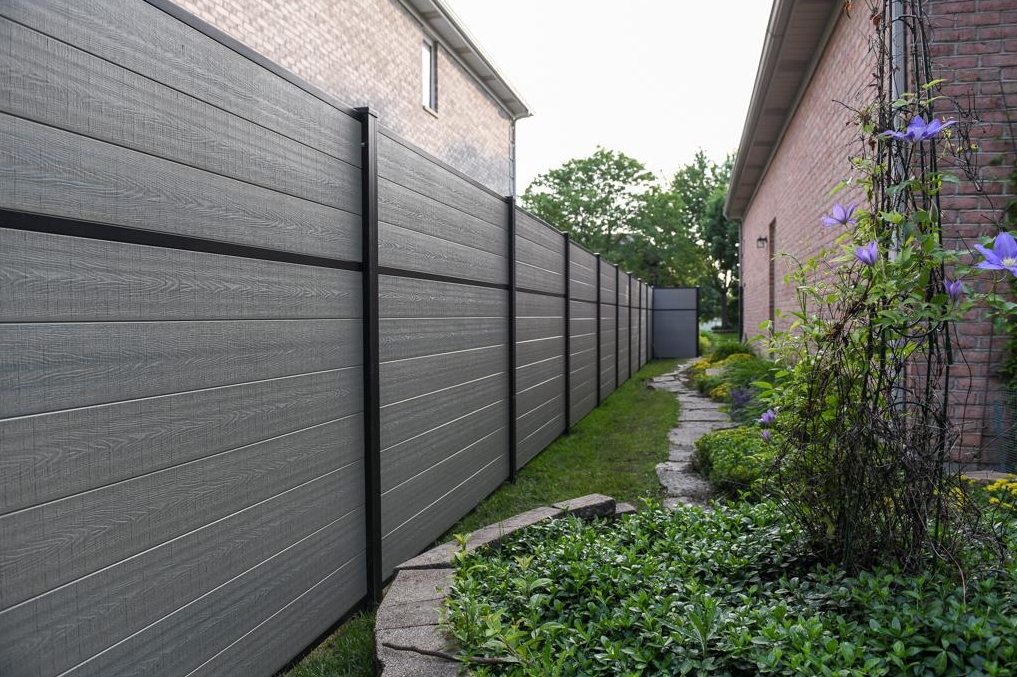In today's evolving home improvement and commercial real estate markets, one fencing solution is quickly gaining the spotlight: composite privacy fences. Once seen as a niche alternative, composite fencing is now rapidly becoming the go-to choice for homeowners, property developers, and designers alike. Combining natural beauty with cutting-edge performance, these fences are redefining what we expect from our outdoor boundaries.
But what’s fueling this surge in popularity? And why are so many industry professionals and smart homeowners making the switch? Below, we dive deep into eight powerful reasons why composite privacy fences are not just a trend — they’re the future of fencing.

Traditional wood fences may charm at first glance, but over time they rot, crack, and fall prey to pests. On average, a wood fence lasts 10–15 years — and that’s with frequent upkeep.
In contrast, composite privacy fences offer outstanding longevity. Made from a high-performance blend of wood fibers, recycled plastic, and bonding agents, they resist moisture, warping, termites, and decay.
📊 Comparison Table: Wood vs. Composite Durability
| Feature | Wood Fence | Composite Fence |
|---|---|---|
| Average Lifespan | 10–15 years | 25–50 years |
| Rot Resistance | Low | High |
| Pest Resistance | Low | High |
| Maintenance Requirement | High | Low |
With a 2–5x longer lifespan, composite fences are the undisputed “longevity champion” of outdoor fencing.
Owning a wood fence often means you’re also signing up for yearly painting, staining, and sealing. These tasks quickly add up in time, energy, and cost.
Composite fences? A quick rinse with soap and water is usually all it takes. Thanks to UV-resistant coatings and material stability, there's no warping, cracking, or fading — even under harsh sunlight.
💡 According to market insights, composite fence owners can reduce maintenance time and cost by over 70%.
Composite fencing isn’t just smarter — it’s greener. Every ton of composite material helps divert ~300 kg of plastic waste and saves 2 cubic meters of wood from deforestation.
This circular economy model turns trash into treasure, making it an excellent option for eco-conscious consumers. It's no surprise that composite fences are now favored in LEED-certified buildings and by environmental organizations.
👉 Learn more about eco-friendly fencing choices in this article.
Forget the limited color palette of traditional wood. Composite fences are available in a wide spectrum of colors — from classic browns to sleek silver gray or bold forest green. Want something more unique? Many collections feature carbonized wood or antique textures for a premium look.
Plus, their fade-resistant surfaces mean your fence will look new for years — no matter the weather.
🖼 Composite fences blend beautifully with:
European-style villas
Modern urban apartments
Zen-inspired landscapes
Composite fences deliver on their core promise: protection. With solid panel designs and customizable heights of up to 3 meters, they offer full privacy and serve as an effective visual and acoustic barrier.
Structurally reinforced with metal posts and wind-resistant up to level 10, these fences can handle the harshest storms without buckling.
Need a secure perimeter for your pool, garden, or commercial property? Composite is the reliable choice.
Rain, snow, heatwaves — no problem. Composite fences are built to adapt:
Waterproof core prevents swelling and mold
UV coating stops cracks and discoloration
Pest resistance eliminates termite threats
Stays stable in -30°C to +50°C temperature ranges
Whether you're in a coastal zone, tropical climate, or dry desert, composite fencing thrives.
Sure, composite fencing costs 20–30% more upfront than wood. But over time? It pays for itself — and then some.
🔎 According to this breakdown:
Wood fences often require 8–10 costly maintenance cycles over 20 years
Composite fences require only minimal cleaning
The annualized cost of composite is up to 67% lower over time
📈 It's a smart investment with a clear long-term payoff.
Composite privacy fences are no longer an outsider in the fencing world. Homeowners’ Associations (HOAs) love them for their uniform, modern look and low upkeep. Developers are embracing them to boost property value and meet sustainability goals.
According to 2024 market data, the North American composite fence penetration rate reached 35% — a 200% increase in five years!
🏘 From high-end residential communities to public commercial spaces, composite fences are setting the standard for the next generation of outdoor design.
Conclusion: The Future of Fencing Is Here
Composite privacy fences are not just a passing trend — they’re a smart, sustainable, and stylish choice for homeowners and property developers alike. With unmatched durability, zero-maintenance freedom, and eco-friendly innovation, they offer a fencing solution that checks every box.
Ready to make the switch? Discover how to choose the perfect fence for your property in our complete WPC fencing guide for 2025, or explore more about material choices in this expert article.
praysunmaterials@gmail.com